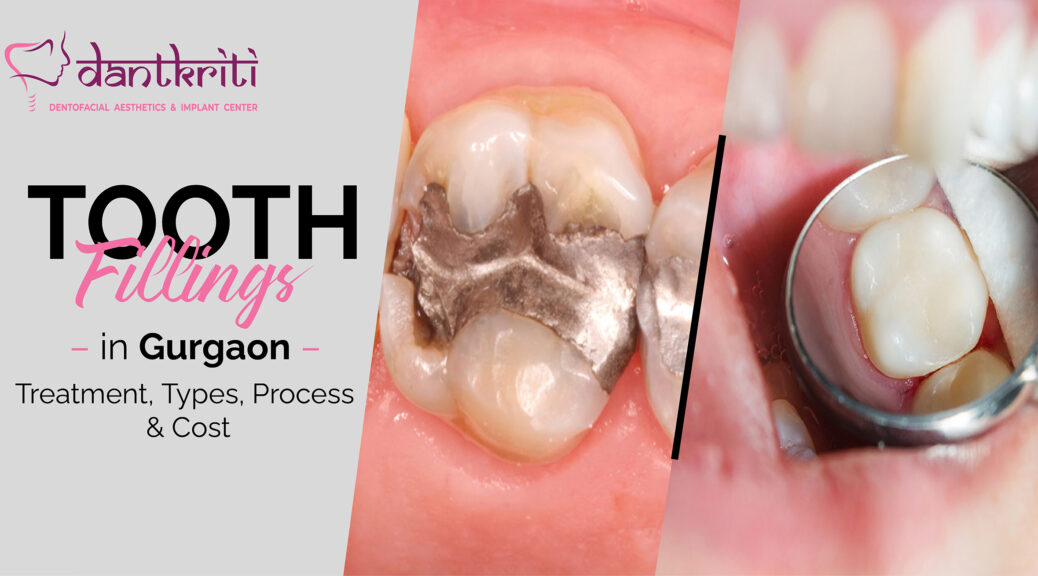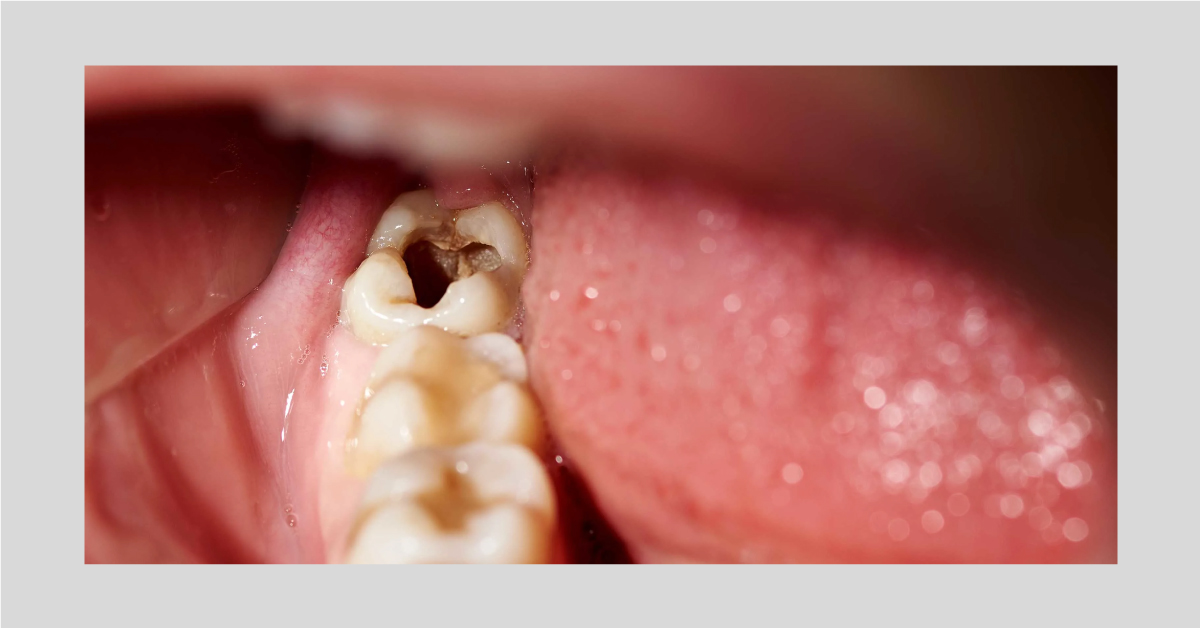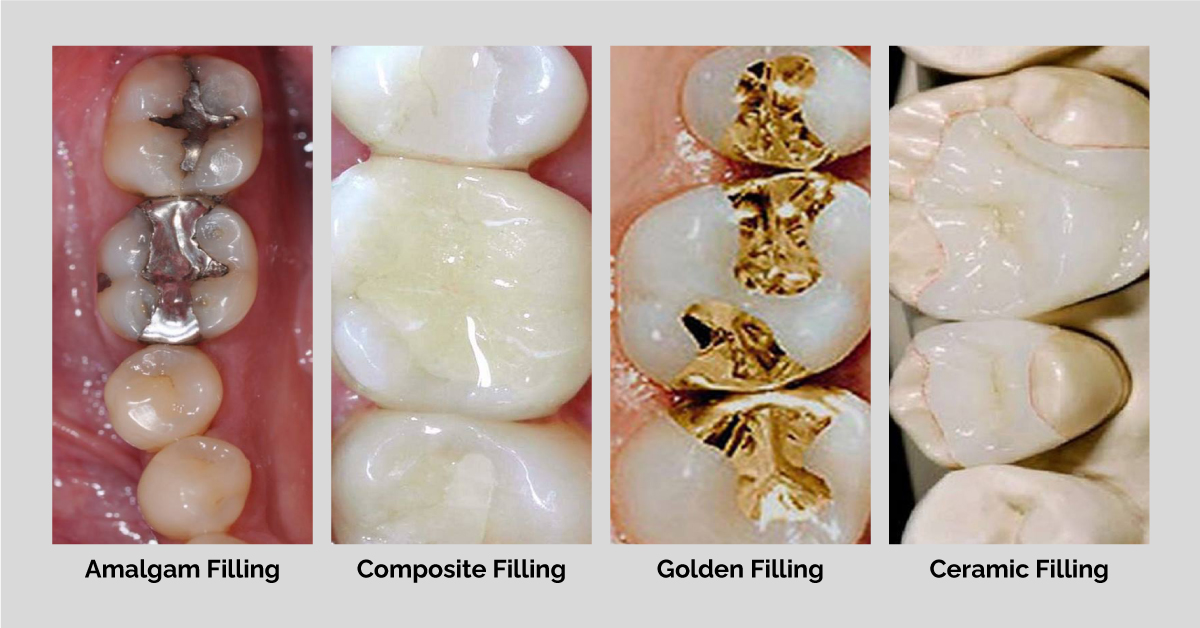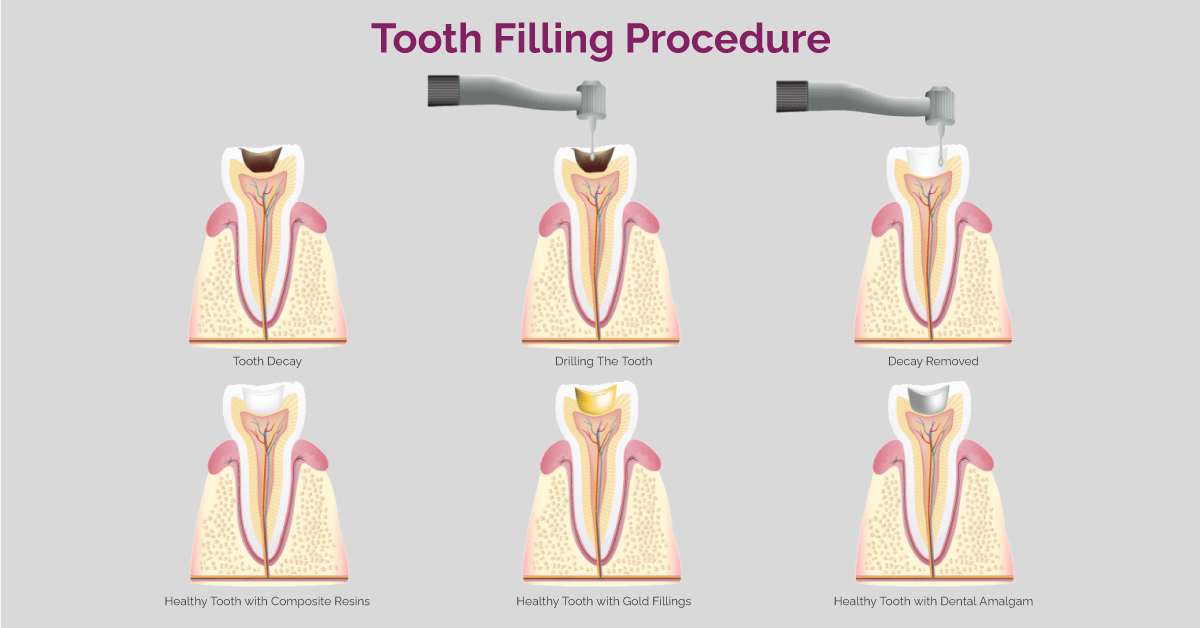
TOOTH FILLINGS IN GURGAON: TREATMENT, TYPES, PROCESS & COST
What Is A Tooth Filling?
Tooth Filling or Tooth Restoration is basically done to restore the damaged or lost structure of the tooth surface. The reason behind tooth structure loss could be a decay of tooth, trauma, or teeth grinding.
As it all said “Prevention is better than Cure”, tooth filling is basically a part of Preventive Dentistry. It allows you to safeguard your tooth from getting dead or non-vital.
Nowadays due to improvements in material and technology tooth filling materials can also be used for cosmetic dental procedures such as teeth filling in gaps & cosmetic tooth bonding
How Do I Know Tooth Filling Is Required

Hole in the tooth:
- If you feel or see that there is a hole in your teeth, immediately visit your nearest dentist for a checkup.
Food sticking between teeth:
- If you feel food gets stuck frequently between teeth, especially in a particular region it’s time to get your teeth checked for any hidden decay between teeth.
- These decay are usually discovered in x-rays before getting big and deep
Black Spots on a tooth
- Black spots usually but not necessarily are signs of Tooth decay. It’s better to get checked by a dentist before drawing a conclusion.
- Black spots on the tooth along with soft demineralized tooth are a sign of decay and require filling.
- Other types of black spots can be deposits or just staining of tooth pit.
Broken or Chipped tooth:
- If the tooth is broken or chipped, it can be repaired with a dental filling.
- For the front teeth, we have tooth color composite fillings that exactly match the shade of your tooth which look and feel completely natural.
Cosmetic Dental Fillings (Cosmetic Bonding)
- Nowadays teeth filling have evolved in terms of aesthetics and bonding and is just not limited to filling a tooth.
Tooth filling materials can also be used to cosmetically change or shape the tooth structure, fill the gap between the teeth, and can provide a stunning smile.
What is the process of Tooth Filling?
- Usually, the process of tooth filling at Dantkriti Dental Clinic in Gurgaon is simple and painless.
- First of all our dentist examine the condition of the tooth with the dentist’s mirror & probe, and access the demineralized areas of the tooth.
- To rule our hidden decay (Interproximal Decay) or to look for the extent of the decay we have to take Dental X-rays.
- Once the Tooth cavity is ruled out we have to access the extent of decay, the design of cavity preparation & material of choice for long-lasting results.
- Mostly anesthesia is not required as the dental filling process is a painless procedure but in a few cases when the cavity is too deep or the patient has intolerable sensitivity we might need to numb the particular tooth to relieve the discomfort and to complete the cavity filling process effectively.
- Once the tooth cavity is sterilized and all soft decay is removed we dry the tooth and fill the tooth with the selected filling material.
- Once the filling is set we need to observe for any high points and remove them off and finally we finish and polish the restoration to remove any roughness.
- Sometimes if the adjacent gums are inflamed and bleeding and it’s difficult to maintain isolation from the blood we need to pack the cavity with temporary filling material and recall after a day or two to complete the permanent filling process till the inflammation subside.
- For interproximal fillings, we need to build a wall with help of a matrix system and wedges to provide the perfect fit and shape of the restoration.
What Are Different Types Of Teeth Filling Material Available?

To know what were the different dental filling options are available, and what are the pros and cons of each option let’s dive in.
- Most people know that there are two types of dental fillings, silver fillings, and white fillings.
- While these are the most common types of tooth fillings, did you know that there are three more filling options available?
Dental Restorative materials are basically of two types:
Direct Dental Fillings
- Direct teeth fillings are those which are placed directly on patients’ teeth and allowed to harden or set. Direct fillings are usually quicker to place and cost less than indirect fillings. example, Tooth color composite, Glass Ionomer Cement ( GIC), Silver-Amalgam tooth filling, Direct filling Gold.
- These are usually suitable for small to moderate size of the cavity.
- Direct Teeth fillings usually require a single sitting
- Direct teeth fillings are dental fillings that are made in your mouth.
There are three types of direct fillings that are used in dentistry, white fillings, silver fillings, and gold foil fillings.
White Filling / Composite Filling
- The most common filling option these days is a white filling.
- They are made out of a plastic material called composite resin.
- This type of filling has become very popular in recent years because when it’s placed well, you can’t tell you to have a filling in your tooth.
- Since it’s done directly in the patient’s mouth, it usually takes one visit to the dental office.
The pros of white filling are:
- It looks like a natural tooth,
- It bonds to your tooth so the hole for the filling doesn’t need to be as big as for a silver filling,
- It can be done in one visit.
The cons of white filling are:
- It takes longer to place than a silver filling,
- The tooth has to be kept very dry for the glue to work,
- They may not last as long as a silver filling.
Silver Amalgam Tooth Filling
The second most popular type of filling is a silver filling.
- These work very well but have lost some of their popularity due to how they look. No matter how well it’s placed, it’s still silver in color.
- Also, since silver fillings aren’t bonded to your tooth, the cavity needs to be shaped so that it is wider at the base and narrower at the top to lock the filling into place.
- Another issue people have is that there is mercury in silver fillings.
- The FDA recently recommended that silver fillings not be placed in children, pregnant women, and people with certain medical conditions.
The pros of silver fillings are
- They are quick and easy to place,
- They can potentially last a really long time.
The Cons of silver filling are
- Unaesthetic appearance
- Mercury toxicity
- Allergic reactions to silver fillings are not uncommon. These are basically termed Lichenoid Reaction and are presented as white & black lines on cheeks associated with redness and pain. The treatment is to remove the silver filling and replace is with the more biocompatible materials such as composite filling materials.
Gold tooth filling
- The last type of direct filling is a gold foil filling. This type of filling is rare to see nowadays.
- It consists of small pieces of pure gold that get cold-welded together in your tooth to form a filling.
- Cold welding happens when the pieces of gold are hammered together.
- In the early days of dentistry, dentists would use a small hammer, called a mallet, to hammer the gold by hand. Later, electric-powered mallets called electro-mallets were used. but I don’t think many of them still use the technique.
Indirect Dental Fillings
- These filings are manufactured outside the patient mouth in dental laboratories and then cemented in the patient’s mouth.
- Example Inlays and Onlay made from metal, zirconia, or porcelain.
- These are two-step procedure
- Indirect fillings, while usually more expensive, may last longer, and will usually have a better shape especially if the filling size is large.
The second category, indirect fillings, consists of two types either white fillings or gold fillings.
Another name for indirect fillings is inlays or onlays depending on how big they are.
The white-colored indirect fillings are usually made of porcelain or composite resin.
Metal indirect fillings are made out of a gold alloy or Cobalt-Chromium alloys.
Nowadays indirect metal fillings are also made up of titanium which is highly biocompatible
The PROS of indirect filling
- The filling is made outside of your mouth, it is easier to make it the proper shape.
- Sometimes it’s very difficult to shape a filling properly inside your mouth, especially in interproximal areas
- Porcelain and gold both tend to be much stronger materials than composite resin.
The CONS of Indirect Filling
- Generally, these types of fillings usually take two visits to place.
- A mold is made of the tooth and a dental lab will make the filling.
- Although at Dantkrit since we use in-office dental scanners we make indirect porcelain in one sitting
Which are the best teeth filling materials?
- We have discussed the pros and cons of each type of filling
- The material of choice is very much dependent upon the appearance, size, and site of filling.
- Today due to advancement in technologies and material science the Light cure composite (white fillings) are the tooth restorative material of choice in the case of small filling
- For large cavity sizes, the porcelain inlays and onlays are the best kinds of tooth restorative options.
How much does Filling last?
This question does not have one definite answer. The longevity of filling is dependent upon several factors such as
Size of filling
- Small dental fillings last longer than large fillings.
Site of filling
- Fillings on top surfaces last longer than sidewall fillings.
Type of filling:
- Indirect fillings last longer than direct filling
Filling Material:
- Silver fillings usually stay longer than white fillings due to their property of setting expansion
Oral Hygiene Maintainance:
- The filling stays longer in person with good oral hygiene maintenance.
- The chances of decay from the margins are more in case of poor maintenance of Oral hygiene and diet.
What is the cost of teeth filling in Gurgaon India?
The cost of tooth filling is highly variable and is determined by several factors such as
- Type of filling
- Filling Material cost
- Size of filling
- Experience & Handwork of Dentist
- Type of tooth
- Number of fillings
Dental filling cost in Gurgaon
- In the case of direct tooth fillings, the cost of tooth restoration may vary from 1000 to 3500 INR.
- Indirect fillings such as Inlays and Onlays are costlier and may cost up to 6000 – 15000 INR.
- Cosmetic dental bonding may cost up to 1500-8000 INR.
To know more about tooth filling or dental health book an appointment with Dr. Shefali Gupta best cosmetic dentist in Gurgaon.
Dantkriti ( Dentofacial Aesthetics And Implant Center) Golf Course Road at +91-9773505706.
Dantkriti ( Dentofacial Aesthetics And Implant Center) Ardee City at +91-8920301714


